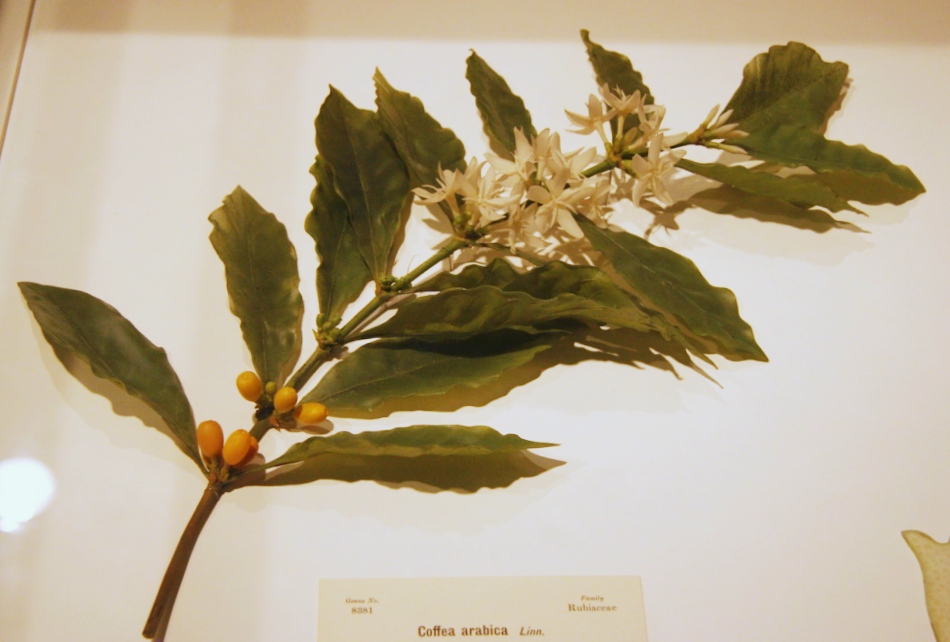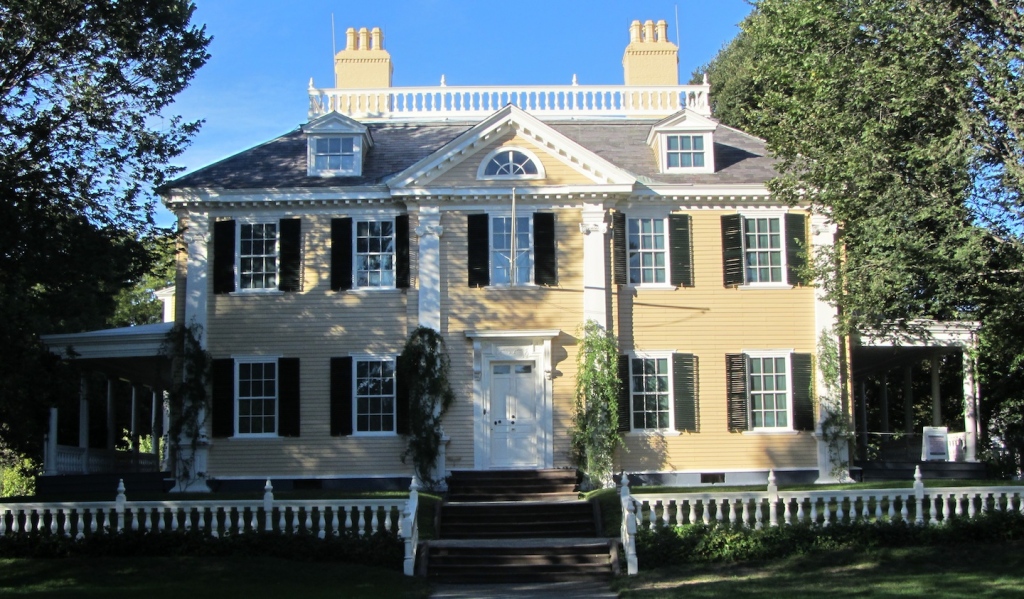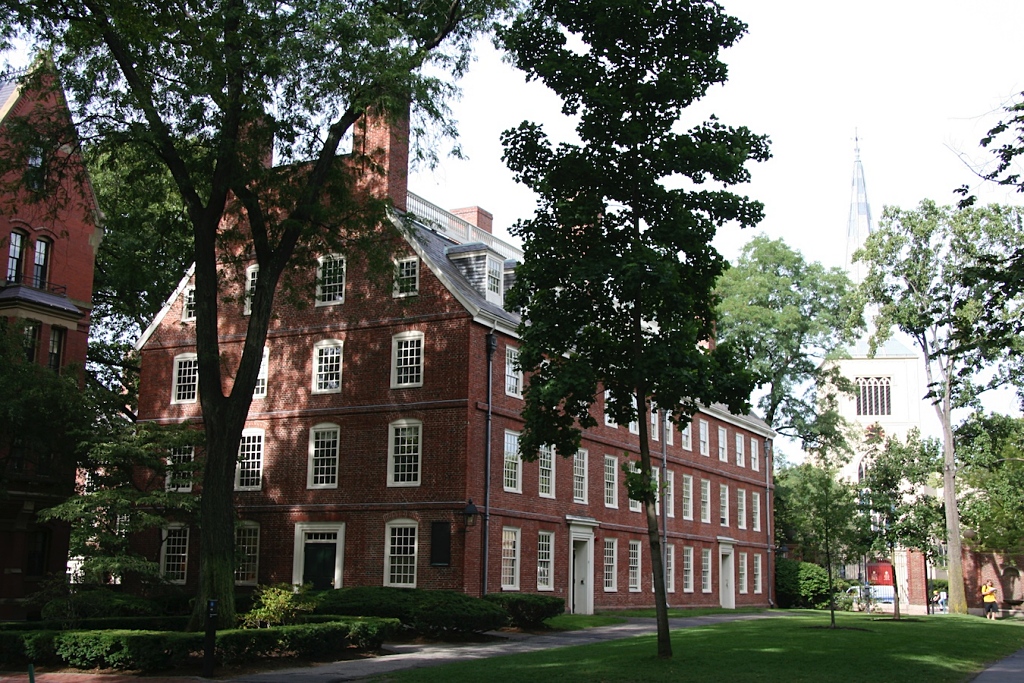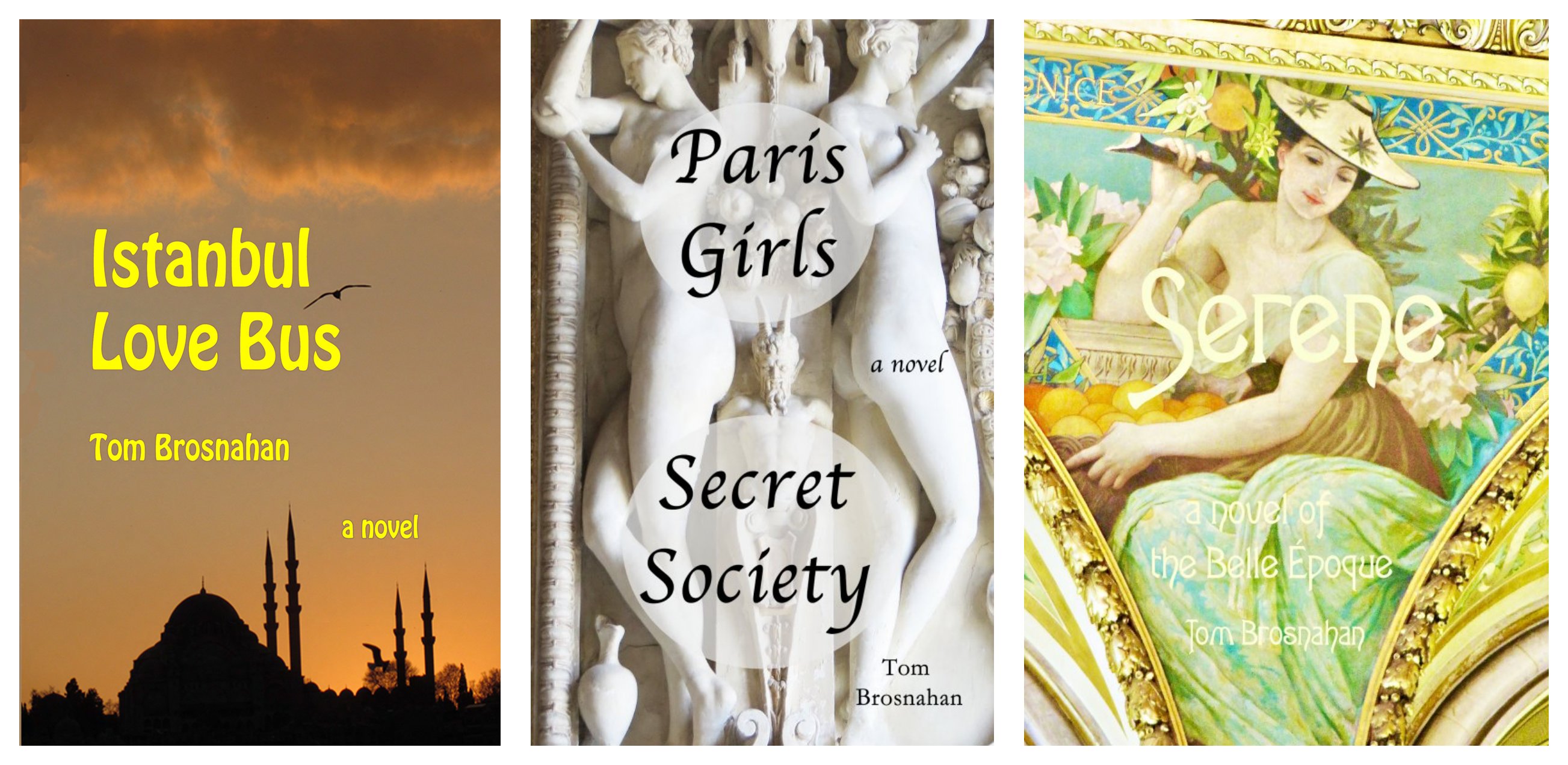About Cambridge
Massachusetts Institute of Technology is in Cambridge too, after all., as are several other colleges and universities.
But Harvard Square, Harvard University and its museums are certainly the destination for most casual visitors to the city.
Harvard Square, at the intersection of Massachusetts Avenue ("Mass Ave") and John F Kennedy Street in Cambridge MA (map), is a crossroads that teems with evidence of a hundred lifestyles, from the stuffily academic to the loosest dropouts.
All around you is Harvard University, with its many excellent museums, including the Harvard University Art Museums, Museum of Natural History, and Peabody Museum of Archeology & Ethnography.
Getting There
Cambridge's Harvard Square is 3 miles (5 km) west of downtown Boston; 6 miles (8 km) southeast of Lexington; 15 miles (24 km) southeast of Concord.
Subway Train
It's easy to reach Cambridge, the Massachusetts Institute of Technology (MIT), Harvard University and Harvard Square by the MBTA Red Line subway train from Boston to the Kendall (for MIT) or Harvard stations. Traveling from Boston to Harvard Square, take Outbound trains in the direction of "Alewife."
Going from Harvard Square into Boston, take any Inbound train; all Red Line and Green Line trains stop at Park Street Station, the subway system's central point.
Bus
If you're in Boston's Back Bay section, you might find it easier to walk to Massachusetts Avenue and catch MBTA Bus 1 ("Harvard Square - Nubian Station"), which goes past M.I.T., through Central Square directly to Harvard Square, the last stop. From areas nearer to Boston Common, the MBTA Red Line subway is faster than the bus.
Car
From Boston, take Storrow Drive westbound along the south bank of the Charles River, or Memorial Drive westbound along the north bank, and follow the signs to Harvard Square.
You can also follow Massachusetts Avenue ("Mass Ave") from Boston across the Charles River and all the way to Harvard Square.
Bicycle
Bike paths extend along both sides of the Charles River from the center of Boston all the way to Harvard Square and beyond. More...
What to See & Do
Just north of Harvard Square along Mass Ave is Cambridge Common, the historic common pasture, now a pretty park, good for a stroll, a rest, or a picnic.
Cambridge, Massachusetts, is a city of more than 100,000 inhabitants, but for most visitors the places they want most to visit are these:
Harvard Square
Reachable from Boston in minutes by subway, Harvard Square is the heart of Cambridge for visitors with its boutiques, cafés, restaurants, and of course Harvard University.
Harvard Square (which is anything but square) is at the intersection of Massachusetts Avenue and John F Kennedy Street (map).
It's a crossroads that teems with evidence of a hundred lifestyles, from the stuffily academic to the loosest of dropouts.
When you arrive at Harvard subway station on your Red Line train from Boston, you'll walk up the station's stairs and out into a funky and fertile world right at the center of Harvard University, America's most staid and most prestigious institution of higher learning.
The scores of buildings belonging to Harvard University (including its many fine museums) are all around the square, as are hundreds of shops, boutiques, cafes, offices, a few cinemas and nightclubs.
For the Massachusetts Institute of Technology, take the Red Line subway to Kendall Square.
Harvard University
"The world's greatest university" is how Harvard people think of their institution. It's certainly a contender.
The first college founded in the British colonies, Harvard College was established in 1636 by the Great and General Court of Massachusetts Bay, the colonists' assembly.
John Harvard (1607-1638), a clergyman, gave his library and a sum of money to the fledgling college, a generous gesture that has earned his name worldwide fame.
From that early beginning Harvard College grew into Harvard University, a huge educational establishment with an endowment of more than $53 billion.
You'll want to walk around the main Harvard campus just off Harvard Square in Cambridge MA, including Harvard Yard and the major Harvard museums on nearby Oxford Street.
Harvard University Campus Tours
Harvard Visitor Center Tours are the university's official free campus tours, both virtual and in-person led by students. Registration is required in advance: download the Visit Harvard mobile app to your smartphone for more information.
Want to go by yourself? Self-Guided Tour Maps in numerous languages are on sale ($3) in the Visitor Center at 1350 Massachusetts Avenue in Harvard Square between Dunster and Holyoke streets (map).
Some private tour companies, which are required to register with Harvard, also organize Harvard tours. These are not official Harvard University tours.
Harvard Art Museums
Incorporating the collections of the Fogg Art Museum, Busch-Reisinger Museum, and Arthur M Sackler Museum, the Harvard Art Museums complex opened to visitors late in 2014. It ranks as one of the more important collections of painting and sculpture in the Boston area. More...
Harvard Museum of Natural History
Harvard's Natural History museum encompasses the collections of comparative zoology, the geological and mineral exhibits, the famous glass flowers, and the world-renowned Peabody Museum of Archeology and Ethnology, noted especially for its collections of Mayan artifacts and photos.
Located on Oxford Street, a 10-minute walk from Harvard Square (map), the huge and rambling museum building also houses the Peabody Museum of Archeology and Ethnology. They are both part of the Harvard Museums of Science & Culture.
Glass Flowers
The world-famous collection of glass flowers features more than 3000 incredibly delicate and detailed glass replicas of flowers created by Leopold and Rudolf Blaschka between 1887 through 1936. The historic replicas were made in the days before color photography allowed a botanist to make teaching aids easily and cheaply with only a camera. The variety of flowers and other plants on view and the craftsmanship that it took to make them are truly amazing.

Coffea arabica glass flower. Yes, it's made of glass!
Zoology
The zoology collections are favorites with children: rooms with stuffed animals gathered around the world, from a tiny hummingbird to a towering giraffe. Sharks, ostriches, hippopotamuses and zebras abound, as do the exotic beasts from exotic places: tapirs, lemurs, quetzals, and aardvarks.
The museum is a product of the 19th-century rage for natural history, which sent Harvard men all over the world in search of specimens to use in scientific teaching. Don't miss the full-size whale skeletons, in the same high-ceilinged room that houses the giraffe.
Geology & Mineralogy
The geological and mineralogical collections are an unusually comprehensive systematic mineral collection, including gems, meteorites, and minerals from New England.
Newer exhibits include one on arthropods (the million-species phylum that incudes thousands of bugs, spiders and millipedes as well as crabs, lobsters and shrimp) and another on climate change.
Museum Shop
The Museum Shop is one of Cambridge's most fascinating places with wonderful collections of minerals, jewelry, books, toys, games and stuffed animals on sale.
From Harvard Square, ask your way to the Science Center and Memorial Hall (map), then walk between these buildings to get to Oxford St. Walk north on Oxford, and the third building on your right (a large, rambling 19th-century red-brick structure) is the museum complex.
Peabody Museum
Harvard archeologists and ethnologists probed the jungles of Central America, and the islands of Oceania and Japan in search of art and artifacts. Here are their discoveries, along with other fine displays and changing exhibits.
The Peabody Museum of Archeology & Ethnology, 11 Divinity Avenue, is a treasure-house of ancient lore, from large carved monuments to everyday tools and implements gathered by adventurers, explorers, archeologists, and scholars in the jungles and mountains of Central America.
The Mayan civilization is particularly well represented, with wall-size photographs of jungle scenes, carefully-crafted plaster copies of the giant stelae and zoomorphs from Quirigua, Guatemala, and Copán, Honduras, gold jewelry, and household artifacts.
Notes and extracts from diaries posted here and there give you an idea of what it was like being one of the first archeologists to discover and study these fascinating works of art.
Located on Oxford Street, a 10-minute walk from Harvard Square (map), the huge and rambling museum building also houses the Harvard Museum of Natural History. One ticket admits you to both museums.
From Harvard Square, ask your way to the Science Center and Memorial Hall (map), then walk between these buildings to get to then walk between these buildings to get to Kirkland St. Walk right on Kirkland, and turn at the first left onto Divinity Ave. The Museum (a large, rambling 19th-century red-brick structure) will be on the left, one of the four Harvard Museums of Science & Culture,.
Loeb Drama Center - A.R.T
Home to the highly-regarded American Repertory Theatre (A.R.T.), this is also where Harvard student productions are staged.
The American Repertory Theatre (A.R.T.), resident professional company at the 556-seat Loeb Drama Center, 64 Brattle Street, performs a variety of works year round in a rotating repertory.
For six weeks in the autumn and spring, the A.R.T. steps aside as Harvard/Radcliffe undergraduates of the Harvard-Radcliffe Dramatic Club take the stage.
Longfellow House
Those interested in 18th-century American Revolutionary War history and the 19th-century Cambridge literary scene will want to visit the Longfellow House-Washington's Headquarters National Historic Site at 105 Brattle Street, a 10-minute walk northwest of Harvard Square (map).

Longfellow House, George
Washington's headquarters
and Henry and Fanny
Longfellow's home, in Cambridge MA.
Built in 1759 by Major John Vassall, General George Washington used the house as his military headquarters during the Siege of Boston (July 1775-April 1776). In fact, he and Martha celebrated their 17th wedding anniversary here.
Some decades later, Mrs Andrew Craigie took in boarders (mostly Harvard professors), and among them was poet Henry Wadsworth Longfellow, starting in 1837.
Soon after moving to the house, he and Fanny Appleton were married, Fanny's father bought the house for the young married couple, and the poet lived here until his death in 1882.
Virtually all of the Longfellows' belongings and furnishings are still here, as they left them when they died, for the house was occupied by their descendants until the early 1970s.
It's an elegant and beautiful house, and yet still warm and homey, a treat to walk through. The National Park Service guides who take you through, give you a good introduction to the life, times, styles andliterary world of the mid-1800s, when America was searching for its national—and especially cultural—identity.
Longfellow House sponsors concerts every two weeks on Sunday afternoons in summer, on the lawn, free, and open to the public.
From Brattle Square (a few steps from Harvard Square), follow Brattle Street, and after about five blocks and ten minute's walk, look for the big yellow house on the right-hand side (map).
Massachusetts Institute of Technology
M.I.T., near the entrepreneurial center of Kendall Square, ranks among the top engineering, scientific and research learning centers in the world.
Founded in 1865 when the USA was rapidly industrializing, its faculty, students and graduates have since produced 100 Nobel prizes, 60 Medal of Science winners, and countless inventions, processes and innovations.
Women make up 48% of M.I.T. 4,657 undergraduate students; minorities 57%. International students account for 40% of the Institute's 7,296 graduate students, making up a wonderfully diverse and worldwide student body.
Campus Tours
Being M.I.T., lots of the information you may want is on the M.I.T. website. For an in-person, tour of the 168-acre (68-hectare) Cambridge campus, go to this web page. You can also do a self-guided tour, which starts with this map, and continues with these web pages.
Where to Stay in Cambridge
Cambridge has its own selection of excellent hotels. Transportation between Cambridge and Boston is fast and frequent, so you can make either city your base for visits to both.
The MBTA subway's Red Line trains connect most of these hotel areas with downtown Boston (Park Street Station on Boston Common, and South Station Transportation Center), making it possible to visit both Cambridge and Boston easily from your Cambridge hotel.
Hotel Map with Prices
Use the handy Hotel Map below to see room rates, availability and location, and find the hotel that's right for you. (Don't see the map? Click here!)
Harvard Square Hotels
Harvard Square in Cambridge is a mecca for youth, their parents and teachers (not necessarily traveling together....) These hotels and inns are within a 5- or 10-minute walk of Harvard Square and Harvard Yard of Harvard University.
Kendall Square & MIT Hotels
Kendall Square is Cambridge's high-tech mecca not far from the campus of the Massachusetts Institute of Technology. The MBTA subway's Red Line connects its Kendall Square/MIT station with Harvard Square, downtown Boston's Park Street Station, and South Station Transportation Center.
East Cambridge Hotels
East Cambridge is a Boston-area high-tech district to rival neighboring Kendall Square. The Museum of Science is here, and this is the closest part of Cambridge MA to downtown Boston: Boston's hospital-filled West End is just across the Charles River Dam, less than a mile (1.6 km, a 16-minute walk). MBTA subway Green Line trains go from Lechmere station in East Cambridge via North Station, Haymarket, Government Center (change for the Blue Line to Logan Airport) to Park Street Station beneath Boston Common.
Cambridgeport Hotels
Cambridgeport is the southernmost part of Cambridge MA, ranged along the Charles River and dominated by the Massachusetts Institute of Technology and, on the other side of the Charles River, Harvard Business School. The closest Red Line subway stations are some distance from Cambridgeport, but Memorial Drive and Soldiers Field Road/Storrow Drive make going by car easier.
North Cambridge Hotels
North Cambridge, north of Harvard Square along Massachusetts Avenue, has a few places to stay which may suit your travel plans. This area is more residential, closer to Tufts University and Fresh Pond, and suitable for those with a car. The MBTA subway's Red Line is convenient to a few of these lodgings.
Hotels in Allston
The Allston section of Boston, south and west across the Charles River from Cambridge MA, has a few hotels worth considering if your budget is limited and you want pretty easy access to Boston College and Boston University. The MBTA subway's Green Line B (Boston College) train's Harvard Avenue station is not far from these hotels. You can go to Harvard Square by Bus 66 ("Harvard Sq via Allston").

